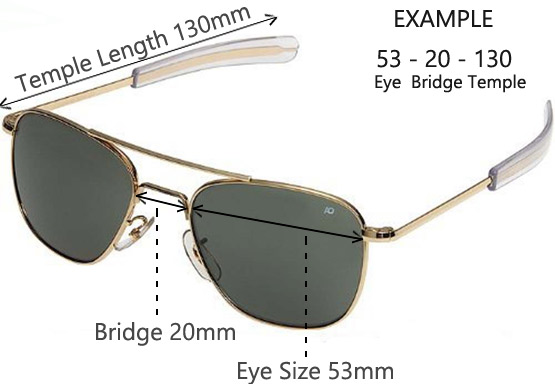Aside from trying on a whole bunch of sunglasses, there are some slightly more scientific ways to figure out how to find glasses that fit your face. These tips and tricks actually work for any glasses you want, and they can help you figure out what style will most compliment your shape and size. Sunglasses tend to be larger than eyeglasses, but the measurements are calculated the same way (just in case you ended up reading this and you’re looking for eyeglasses).
Start With Your Cranium
In order for measurements to work, you need an accurate measurement of your own head. That way, you’ll have a reference point for what size sunglasses you need. This will also help you ascertain what glasses are too big, and what frames will make you look like you’re squinting through tiny lenses.
Saying that you have a “big head” or a “small face” is valuable in layman’s terms, but it doesn’t help if you’re not standing in front of a whole bunch of glasses to try on. I don’t know about you, but I don’t have too much time for sunglass shopping.
How To Get The Millimeters
 When measuring your face, you’ll need to line a ruler up (on the millimeter side) with the location of your temple. The ruler shouldn’t wrap around your head, instead, it should float in front of your face in the space where your temple is located. Then, measure straight across to the other temple. The measurement you get is the best frame size for your face.
When measuring your face, you’ll need to line a ruler up (on the millimeter side) with the location of your temple. The ruler shouldn’t wrap around your head, instead, it should float in front of your face in the space where your temple is located. Then, measure straight across to the other temple. The measurement you get is the best frame size for your face.
Eyewear Measurements
Glasses have three primary sizes you need to know about.
Eye size is the width of the lenses at the widest part. It’s the most common measurement you’ll see in reference to the size of glasses. Ray-Ban New Wayfarer Sunglasses come in 52 mm and 55 mm lens sizes.
Bridge size measures the piece of metal or plastic that connects the lenses. In order to measure the bridge, you start and end at the innermost side of the lenses and measure to the same spot on the other side of the bridge.
Temple size is the measurement of the arms of the sunglasses. Also called the temples, the measurement of the arms starts at the hinges and continues in a straight line to the farthest point without sloping downward.

There’s one more thing you might want to know, the vertical measurement tells you how tall your glasses are. This doesn’t always help unless you’re ordering prescription sunglasses that require special lenses but regardless, it is measured from the bottommost part of the lens straight up to the top.
Your Width Versus Theirs
General width will tell you how large the glasses are in total. You can then measure your face and see how many millimeters across it is to get a rough idea of how large the glasses will be. To figure this part out, measure the segments of the temples you can see from the front along with the lenses and bridge. That number will tell you roughly if the glasses are large enough for your face.
Estimate Your Match Up
If you know the total width of the sunglasses (including lenses, end pieces and bridge), you can in general, subtract 6 mm from the total and compare it to the width you calculated earlier. If it’s within 2 mm of your face size, they should be a good fit for you. If you don’t have the total width but you have the glasses to measure, add up the lenses multiplied by two with the bridge size. If that number is within 2 mm of your face size, you should be good to go with those glasses as well.
Get Ready! Get Tape!
Measuring your face sounds tedious, but it will make the process of buying and returning sunglasses much less hassle. Without the measurements, it’s really hard to tell if glasses have the right sized bridge or lenses to fit your face. It only takes a few seconds, but numbers can clarify a whole lot for you.


